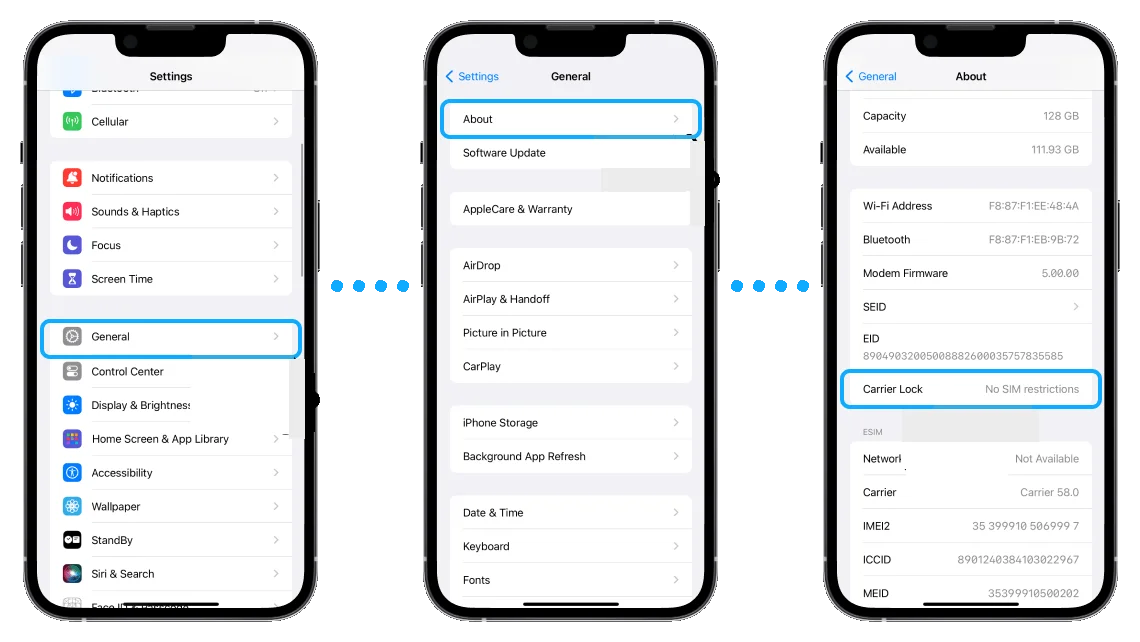To use an eSIM, your phone must be carrier-unlocked. Here's how to check:
For iOS (iPhones and iPads):
1. Go to "Settings" > "General" > "About".
2. Scroll to find "Carrier Lock" or "Network Provider Lock".
- If it lists a specific carrier (e.g., "AT&T", "Verizon"), your phone is locked. Contact your carrier to request unlocking.
- If it states "No SIM restrictions", your device is unlocked and compatible with eSIMs.
- Note: Newer iPhones (e.g., iPhone 14 and later in the U.S.) are sold carrier-unlocked by default.

For Android (Samsung, Google Pixel, etc.):
1. Go to "Settings" > "Network & Internet" (or "Connections" on Samsung devices).
2. Tap "Mobile Network" > "Advanced" > "Carrier" (or "Network Operators" on Samsung).
3. Select "Search Networks" or "Choose Network".
- If only your current carrier appears, your phone is likely locked. Contact your carrier for unlocking.
- If multiple carriers appear, your device may be unlocked (but manual network selection doesn't guarantee full unlock status).
- Important: Android steps vary by manufacturer. For Samsung: Settings > Connections > SIM Card Manager > Network Lock Status. For Google Pixel: Settings > Network & Internet > Mobile Network > Advanced > Carrier.
Additional Verification Tips:
- Insert a SIM card from another carrier. If service activates, your phone is unlocked.
- Check your IMEI status via your carrier's official website (e.g., AT&T IMEI Checker, Verizon Device Unlock).
- Most carriers require accounts in good standing and full device payment before unlocking (e.g., 40 days for T-Mobile, 60 days for AT&T, 6 months for Verizon).
Note: Carrier policies vary by region and contract terms. Always confirm directly with your provider.